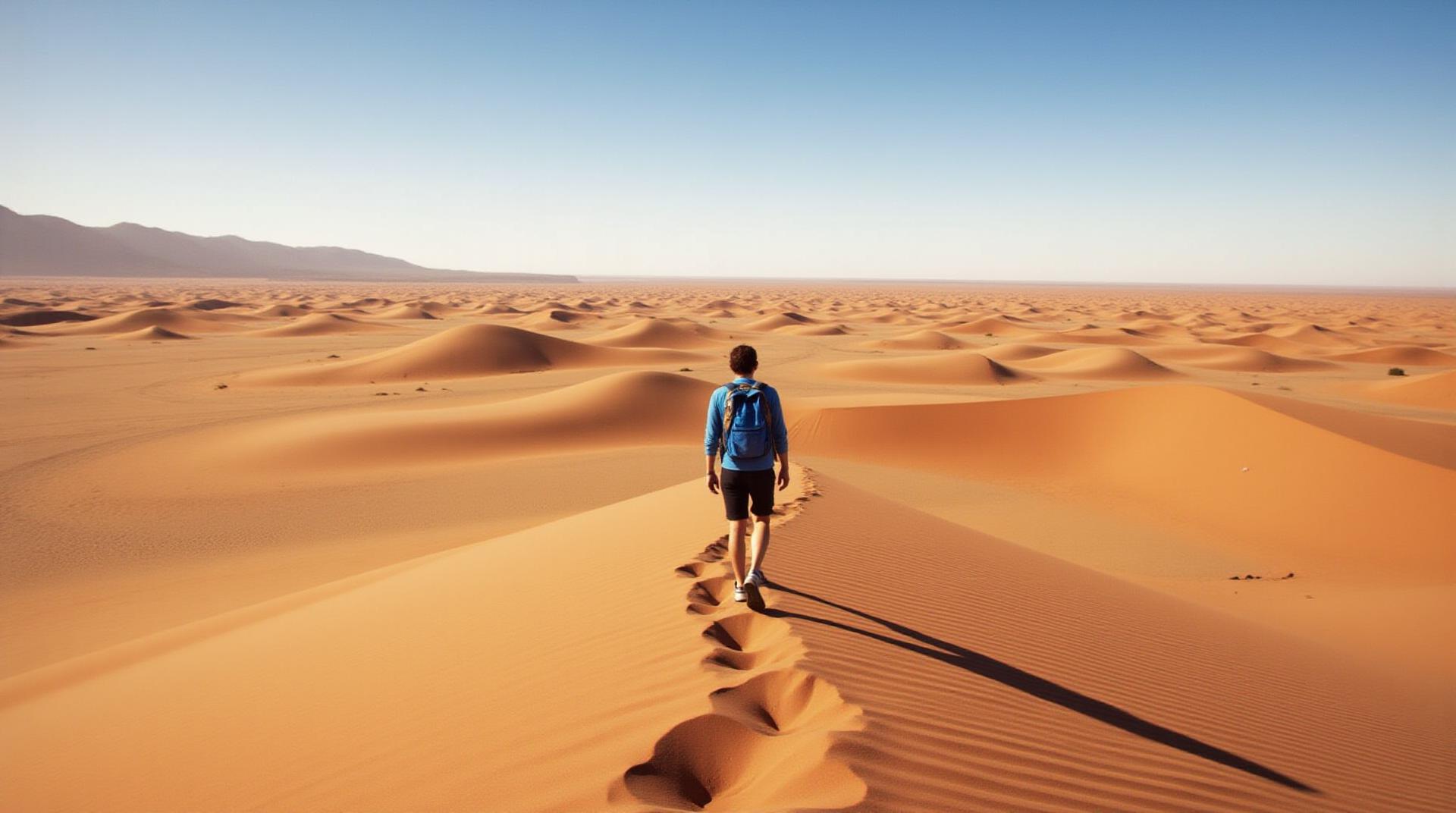Solo in Namibia: Dune Hiking in the Namib Desert

Solo in Namibia: Dune Hiking in the Namib Desert
Exploring the Namib Desert on your own is an adventure unlike any other. This captivating landscape, stretching across Namibia’s arid expanse, holds secrets whispered by the desert wind. From ancient dunes that kiss the sky to bottomless, echoing canyons, the Namib can ignite a sense of incredible freedom and tranquility only possible when you’re traveling solo.
Why a Solo Trip to Namibia is Special
There’s a stark beauty in Namibia’s vast and unwavering expanse. Hiking the dunes solo allows you to truly soak in the silence, the incredible sunsets, and the unlimited star-studded skies. You have the freedom to set your own pace, take long breaks when you need them, and collect your own memories.
Where to Hike: Namibia’s Unforgettable Landscapes
- Sossusvlei & Deadvlei:** Experience the iconic sunrise, majestic giants of Devils-Climbing Church, and the surreal silence of Deadvlei. Hike amongst ancient skeletons of desert scrub and witness an incredible panorama in the early morning.
- Sesriem Canyon:** This canyon is not only a challenge but an adventure. Hike the majestic canyon named after the word ‘Peace’, and enjoy a desert safari for an unforgettable experience.
- Damaraland:** Saddle up a strong motorbike, embrace the Cell Tower Trails, and see the ancient rock art. Damaraland is a region full of life but also untouched by tourism.
Practical Tips for Solo Namibia Safaris:
Namibia is a safe place for travelers. However, following these practical pointers will ensure a seamless and enjoyable solo adventure:
- Pre-trip Organization:** Bundle up essentials for safe travel and research routes beforehand. Secure necessary visas and travel insurance for a smooth experience.
- Local Food and Safety:** Embrace the local cuisine and visit locations like local farms and markets to be in touch with the culture. Be mindful of surroundings and safety protocols.
- Stay Connected:** Maintain a plan by sharing your itinerary with someone at home. Pack a small portable adaptor for your electronics, and choose a good, reliable mobile provider.
- Stay Flexible and Enjoy the Journey:** Namibia’s unique beauty demands a slow pace. Allow tangents and changes if something feels “right.”
Embracing the Namibian Dream
Gathered information provided by travelers and communities. They highlight that being dedicated for your individual adventure allows for deeper connections with yourself and nature. Enjoy the serenity, stretch your comfort zones, and create lifelong memories in a world full of diverse landscapes.
Resources:
- Namibia Tourism Board: https://www.experience.namibia.com/
Remember, safety and respect are at the core of every great adventure! Enjoy!
Check similar topics:
“`html
FAQs
General Questions
What is the desert landscape like in Namibia?
Namibia’s desert landscape is characterized by vast sand dunes, rocky outcrops, and arid shrub vegetation. It’s a truly humbling and inspiring environment, offering incredible opportunities for solitude and adventure.
Is solo hiking in Namibia safe?
Safety is paramount for any solo hiker. It’s crucial to prepare thoroughly, informing someone of your itinerary, carry essential gear, and practice leave-no-trace principles. While walking its beautiful paths, you are still responsible for your safety, and be ready to adapt to changing situations.
Where can I get more information about permits and regulations for solo hiking?
Contact the relevant Namibian authorities, such as the Ministry of Forestry and Tourism or the Namibian Tourism Board. They can furnish specific details about permitted trails, any necessary fees, or conditions.
Packing & Gear
What kind of gear do I need for solo hiking?
Packing lists are crucial for successful desert hikes. Essentials include: ample water, high-quality hiking boots, durable backpack, lightweight and weather-appropriate clothing, headlamps, first-aid kit, a map/GPS device and basic survival tools. Be sure to pack according to the weather conditions.
How much water should I carry?
Hydration plays a vital role in navigating desert terrain. Ideally, carry at least 2 liters of water per day, considering individual needs. Acclimatize to the desert environment gradually and bring extra water.
Health & Safety Concerns
What are the unique health risks in the Namibian desert?
The harsh desert environments pose some health risks such as dehydration, heatstroke, sunburn, and contracting insect-borne diseases. Always carry insect repellent, sun protection, and stay hydrated.
`
“`
This is just a small selection of FAQs that you could include in your dedicated website’s FAQs page. You can expand upon this list with more detailed information and different questions about solo hiking, like the weather, safety, best practices, what to do in case of emergencies, and more.
Keep in mind, it’s crucial to include typos and grammatical errors, to show that this is a rough draft document.